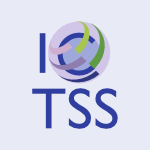85 papers:
 ECSA-2015-GroherW #architecture #requirements
ECSA-2015-GroherW #architecture #requirements- Collecting Requirements and Ideas for Architectural Group Decision-Making Based on Four Approaches (IG, RW), pp. 181–192.
 DAC-2015-ChangHLW #analysis #encoding #functional #named
DAC-2015-ChangHLW #analysis #encoding #functional #named- TA-FTA: transition-aware functional timing analysis with a four-valued encoding (JCCC, RHMH, LYZL, CHPW), p. 6.
 ICSME-2015-BavotaR #code review #quality
ICSME-2015-BavotaR #code review #quality- Four eyes are better than two: On the impact of code reviews on software quality (GB, BR), pp. 81–90.
 HIMI-IKD-2015-YoshinoO #using
HIMI-IKD-2015-YoshinoO #using- Proposal of a Data Presentation Technique Using Four-Frame Cartoon Expression for a LifeLog System (TY, IO), pp. 235–246.
 SAC-2015-HoldererAM #bibliography #constraints #workflow
SAC-2015-HoldererAM #bibliography #constraints #workflow- When four-eyes become too much: a survey on the interplay of authorization constraints and workflow resilience (JH, RA, GM), pp. 1245–1248.
 ICPR-2014-CaoMS #image #segmentation
ICPR-2014-CaoMS #image #segmentation- Segmentation of Anatomical Structures in Four-Chamber View Echocardiogram Images (YC, PM, TSM), pp. 568–573.
 ICTSS-2014-Deak #bibliography #testing #what
ICTSS-2014-Deak #bibliography #testing #what- What Characterizes a Good Software Tester? — A Survey in Four Norwegian Companies (AD), pp. 161–172.
 ITiCSE-2013-CalvoGII #content management #evaluation #heuristic #learning
ITiCSE-2013-CalvoGII #content management #evaluation #heuristic #learning- Are chats and forums accessible in e-learning systems?: a heuristic evaluation comparing four learning content management systems (RC, AG, BI, AI), p. 342.
 KDIR-KMIS-2013-VickN #generative #perspective
KDIR-KMIS-2013-VickN #generative #perspective- Relations between Information Literacy and Knowledge Generation in Innovation Teams — A Four Dimensional Perspective (TEV, MSN), pp. 437–442.
 ICSE-2013-ZanettiSTS #case study #categorisation #community #debugging #network #open source #social
ICSE-2013-ZanettiSTS #case study #categorisation #community #debugging #network #open source #social- Categorizing bugs with social networks: a case study on four open source software communities (MSZ, IS, CJT, FS), pp. 1032–1041.
 CASE-2012-LeeLMNL
CASE-2012-LeeLMNL- Kinematics of the Robomec robot hand with planar and spherical four bar linkages for power grasping (SML, KDL, HKM, TSN, JWL), pp. 1120–1125.
 DAC-2012-Taylor
DAC-2012-Taylor- Is dark silicon useful?: harnessing the four horsemen of the coming dark silicon apocalypse (MBT), pp. 1131–1136.
 ICPR-2012-Yu #locality #using #video
ICPR-2012-Yu #locality #using #video- Localization and extraction of the four clock-digits using the knowledge of the digital video clock (XY), pp. 1217–1220.
 KMIS-2012-LageA #coordination #information management #network #perspective
KMIS-2012-LageA #coordination #information management #network #perspective- Factors Influencing Information Sharing in Four SME Networks in Portugal — A Coordination Perspective (EL, BA), pp. 178–183.
 ICDAR-2011-Kuster #challenge
ICDAR-2011-Kuster #challenge- The Four and a Half Challenges of Humanities Data (MWK), pp. 1017–1023.
 CSMR-2011-MantylaV #case study #challenge #deployment #process
CSMR-2011-MantylaV #case study #challenge #deployment #process- Software Deployment Activities and Challenges — A Case Study of Four Software Product Companies (MM, JV), pp. 131–140.
 CHI-2011-BlythePC #how
CHI-2011-BlythePC #how- F for fake: four studies on how we fall for phish (MB, HP, JAC), pp. 3469–3478.
 Onward-2011-Orchard #design #programming language
Onward-2011-Orchard #design #programming language- The four Rs of programming language design (DAO), pp. 157–162.
 CASE-2010-EderK #design #framework
CASE-2010-EderK #design #framework- Design of an experimental platform for an X-by-wire car with four-wheel steering (ME, AK), pp. 656–661.
 CASE-2010-RuZSZSHC #automation #metric
CASE-2010-RuZSZSHC #automation #metric- Automated four-point probe measurement of nanowires inside a scanning electron microscope (CR, YZ, YS, YZ, XS, DH, IC), pp. 533–538.
 LATA-2010-JordanZ #first-order #quantifier
LATA-2010-JordanZ #first-order #quantifier- Untestable Properties Expressible with Four First-Order Quantifiers (CJ, TZ), pp. 333–343.
 CAiSE-2010-JarkeLLMR #design #requirements
CAiSE-2010-JarkeLLMR #design #requirements- The Brave New World of Design Requirements: Four Key Principles (MJ, PL, KL, JM, WNR), pp. 470–482.
 KR-2010-Arieli #logic #on the
KR-2010-Arieli #logic #on the- On the Application of the Disjunctive Syllogism in Paraconsistent Logics Based on Four States of Information (OA).
 SLE-2010-HubauxBHMH #case study #feature model #industrial #modelling
SLE-2010-HubauxBHMH #case study #feature model #industrial #modelling- Evaluating a Textual Feature Modelling Language: Four Industrial Case Studies (AH, QB, HH, RM, PH), pp. 337–356.
 CSL-2010-MartinM #complexity #first-order #logic #similarity
CSL-2010-MartinM #complexity #first-order #logic #similarity- The Complexity of Positive First-Order Logic without Equality II: The Four-Element Case (BM, JM), pp. 426–438.
 HT-2009-BoellaTV #metric #network #social
HT-2009-BoellaTV #metric #network #social- Four measures for the dynamics of coalitions in social networks (GB, LWNvdT, SV), pp. 361–362.
 ICDAR-2009-HaboubiMEA #invariant #set
ICDAR-2009-HaboubiMEA #invariant #set- Invariant Primitives for Handwritten Arabic Script: A Contrastive Study of Four Feature Sets (SH, SM, NE, HEA), pp. 691–697.
 HIMI-DIE-2009-TaguchiKT
HIMI-DIE-2009-TaguchiKT- A Method for Evaluating the Relationship among Four Perspectives of the Balanced Scorecard (YT, TK, TT), pp. 163–170.
 OCSC-2009-OlssonTWVL #case study #community #interactive
OCSC-2009-OlssonTWVL #case study #community #interactive- Collective Content as a Facilitator of Community Interaction: A User Study of Four Close-Knit Communities (TO, HT, MW, KVVM, JL), pp. 246–255.
 LOPSTR-2009-Nishimura #exception #logic
LOPSTR-2009-Nishimura #exception #logic- Refining Exceptions in Four-Valued Logic (SN), pp. 113–127.
 DATE-2008-WangH #multi #synthesis
DATE-2008-WangH #multi #synthesis- Structural Synthesis of Four-Quadrant Multiplier Based on Hierarchical Topology (XW, LH), pp. 800–803.
 ITiCSE-2008-Kurkovsky #re-engineering
ITiCSE-2008-Kurkovsky #re-engineering- Four roles of instructor in software engineering projects (SK), p. 354.
 ICPR-2008-SuZHL
ICPR-2008-SuZHL- Segmentation-free recognizer based on enhanced four plane feature for realistic Chinese handwriting (THS, TZ, HJH, CLL), pp. 1–4.
 ICPR-2008-YingZ #detection #performance #using
ICPR-2008-YingZ #detection #performance #using- Efficient detection of projected concentric circles using four intersection points on a secant line (XY, HZ), pp. 1–4.
 ICSE-2008-Spinellis #kernel
ICSE-2008-Spinellis #kernel- A tale of four kernels (DS), pp. 381–390.
 ICSE-2008-WangCW #automation #distributed
ICSE-2008-WangCW #automation #distributed- Four enhancements to automated distributed system experimentation methods (YW, AC, ALW), pp. 491–500.
 CSEET-2007-TaranR #case study #comparative #education #people #perspective #process #re-engineering
CSEET-2007-TaranR #case study #comparative #education #people #perspective #process #re-engineering- Software Engineering Education in Russia: A Comparative Study of People, Process and Technology a Four Year Perspective (GT, MRL), pp. 19–28.
 SEKE-2007-RalhaAM #architecture #grid #semantics
SEKE-2007-RalhaAM #architecture #grid #semantics- A Four-layered Semantic Grid Architecture (CGR, JNCA, ACMAdM), p. 724–?.
 CASE-2006-XuLT #using #visual notation
CASE-2006-XuLT #using #visual notation- Visual Positioning Using Four-Point Planar Patterns (DX, YL, MT), pp. 600–605.
 DATE-2006-MoezE #distributed #process
DATE-2006-MoezE #distributed #process- A 10-GHz 15-dB four-stage distributed amplifier in 0.18 µm CMOS process (KKM, MIE), pp. 405–409.
 DATE-2006-PomeranzR #detection #fault #generative #testing
DATE-2006-PomeranzR #detection #fault #generative #testing- Generation of broadside transition fault test sets that detect four-way bridging faults (IP, SMR), pp. 907–912.
 FLOPS-2006-Roy #convergence #design
FLOPS-2006-Roy #convergence #design- Convergence in Language Design: A Case of Lightning Striking Four Times in the Same Place (PVR), pp. 2–12.
 CHI-2006-WobbrockMR #gesture
CHI-2006-WobbrockMR #gesture- Few-key text entry revisited: mnemonic gestures on four keys (JOW, BAM, BR), pp. 489–492.
 ICSE-2006-ZhongZM #comparison #reduction #testing
ICSE-2006-ZhongZM #comparison #reduction #testing- An experimental comparison of four test suite reduction techniques (HZ, LZ, HM), pp. 636–640.
 ICEIS-v4-2004-BalatosPIJL #concept #design #e-commerce #framework
ICEIS-v4-2004-BalatosPIJL #concept #design #e-commerce #framework- Introducing an Operational and Techonological E-Commerce Framework for European SMEs: Designing Regional and Interegional E-Commerce Zones for SMEs in Four Less Favoured European Regions (LFRS) Based on Request Based Virtual Organisation (RBVO) Concept (AB, KP, II, VJ, ML), pp. 309–315.
 ICPR-v2-2004-Ikeda #approximate #re-engineering #using
ICPR-v2-2004-Ikeda #approximate #re-engineering #using- An Accurate Shape Reconstruction from Photometric Stereo Using Four Approximations of Surface Normal (OI), pp. 220–223.
 ICPR-v2-2004-TorselloHP #metric
ICPR-v2-2004-TorselloHP #metric- Four Metrics for Efficiently Comparing Attributed Trees (AT, DH, MP), pp. 467–470.
 KR-2004-Garbacz
KR-2004-Garbacz- The Four Dimensions of Artifacts (PG), pp. 289–299.
 SPLC-2004-FritschR #adaptation #approach #product line
SPLC-2004-FritschR #adaptation #approach #product line- Four Mechanisms for Adaptable Systems: A Meta-level Approach to Building a Software Product Line (CF, BR), pp. 51–72.
 CSEET-2003-SindreSBC #experience #re-engineering
CSEET-2003-SindreSBC #experience #re-engineering- The Cross-Course Software Engineering Project at the NTNU: Four Years of Experience (GS, TS, GB, RC), p. 251–?.
 CHI-2002-BosOGOW #development #trust
CHI-2002-BosOGOW #development #trust- Effects of four computer-mediated communications channels on trust development (NB, JSO, DG, GMO, ZW), pp. 135–140.
 ICDAR-2001-IwataYYKIM #identification #library #using
ICDAR-2001-IwataYYKIM #identification #library #using- Book Cover Identification by Using Four Directional Features Filed for a Small-Scale Library System (KI, KY, MY, KK, MI, KM), pp. 582–586.
 ICDAR-2001-PerroudSBH #clustering #documentation
ICDAR-2001-PerroudSBH #clustering #documentation- Text Extraction from Color Documents — Clustering Approaches in Three and Four Dimensions (TP, KS, HB, LOH), pp. 937–941.
 TOOLS-USA-2001-Behravanfar #architecture #generative #internet #using
TOOLS-USA-2001-Behravanfar #architecture #generative #internet #using- Separation of Data and Presentation for the Next Generation Internet Using the Four-Tier Architecture (RB), pp. 83–88.
 CSCW-2000-JacksonAMM #behaviour #video
CSCW-2000-JacksonAMM #behaviour #video- Impact of video frame rate on communicative behaviour in two and four party groups (MJ, AHA, RM, JM), pp. 11–20.
 HCI-EI-1999-JensenLR
HCI-EI-1999-JensenLR- Forearm Muscular Fatigue during four Hours of Intensive Computer Mouse Work — Relation to Age (BRJ, BL, AR), pp. 93–96.
 HCI-EI-1999-RamseyNC #artificial reality
HCI-EI-1999-RamseyNC #artificial reality- Virtual Reality Induced Symptoms and Effects (VRISE) in Four Different Virtual Reality Display Conditions (AR, SN, SC), pp. 142–146.
 SIGIR-1998-RagasK #algorithm #classification #corpus
SIGIR-1998-RagasK #algorithm #classification #corpus- Four Text Classification Algorithms Compared on a Dutch Corpus (HR, CHAK), pp. 369–370.
 REFSQ-1998-Paech #case study
REFSQ-1998-Paech #case study- The Four Levels of Use Case Description (BP), pp. 207–218.
 LICS-1998-ArieliA #logic
LICS-1998-ArieliA #logic- The Logical Role of the Four-Valued Bilattice (OA, AA), pp. 118–126.
 WCRE-1997-BellayG #comparison #reverse engineering #tool support
WCRE-1997-BellayG #comparison #reverse engineering #tool support- A Comparison of Four Reverse Engineering Tools (BB, HG), pp. 2–11.
 STOC-1997-LubyV #approximate
STOC-1997-LubyV #approximate- Approximately Counting Up To Four (Extended Abstract) (ML, EV), pp. 682–687.
 HCI-CC-1997-PaneroLN #how #people
HCI-CC-1997-PaneroLN #how #people- The Computer Use Scale: Four Dimensions of How People Use Computer (JCP, DML, HAN), pp. 821–824.
 ICSE-1997-EngelmannSL #assessment #experience #named
ICSE-1997-EngelmannSL #assessment #experience #named- BOOTSTRAP: Four Years of Assessment Experience (FE, HS, EL), pp. 568–569.
 STOC-1996-RobertsonSST #graph
STOC-1996-RobertsonSST #graph- Efficiently Four-Coloring Planar Graphs (NR, DPS, PDS, RT), pp. 571–575.
 SIGIR-1996-RollekeF #logic #retrieval #using
SIGIR-1996-RollekeF #logic #retrieval #using- Retrieval of Complex Objects Using a Four-Valued Logic (TR, NF), pp. 206–214.
 CSL-1996-ArieliA #knowledge base
CSL-1996-ArieliA #knowledge base- Four-Valued Diagnoses for Stratified Knowledge-Bases (OA, AA), pp. 1–17.
 ICDAR-v2-1995-YuanTS #graph
ICDAR-v2-1995-YuanTS #graph- Four directional adjacency graphs (FDAG) and their application in locating fields in forms (JY, YYT, CYS), pp. 752–755.
 DAC-1993-KhooC #multi #performance
DAC-1993-KhooC #multi #performance- An Efficient Multilayer MCM Router Based on Four-Via Routing (KYK, JC), pp. 590–595.
 ICALP-1993-CzumajG #graph #problem
ICALP-1993-CzumajG #graph #problem- Problems on Pairs of Trees and the Four Colour Problem of Planar Graphs (AC, AG), pp. 88–101.
 DAC-1992-Ho #modelling
DAC-1992-Ho #modelling- New Models for Four- and Five-Layer Channel Routing (TTH), pp. 589–593.
 SEKE-1992-Tervonen #quality #research #validation
SEKE-1992-Tervonen #quality #research #validation- Quality-Driven Validation: A Link Between Four Research Traditions (IT), pp. 370–377.
 CHI-1991-JeffriesMWU #comparison #evaluation #user interface
CHI-1991-JeffriesMWU #comparison #evaluation #user interface- User interface evaluation in the real world: a comparison of four techniques (RJ, JRM, CW, KU), pp. 119–124.
 GG-1990-HessM #approach
GG-1990-HessM #approach- The Four Musicians: Analogies and Expert Systems — A Graphic Approach (LH, BHM), pp. 430–445.
 DAC-1989-IrwinO #2d #comparison #layout #matrix #tool support
DAC-1989-IrwinO #2d #comparison #layout #matrix #tool support- A Comparison of Four Two-dimensional Gate Matrix Layout Tools (MJI, RMO), pp. 698–701.
 SIGMOD-1989-SchneiderD #algorithm #evaluation #parallel #performance
SIGMOD-1989-SchneiderD #algorithm #evaluation #parallel #performance- A Performance Evaluation of Four Parallel Join Algorithms in a Shared-Nothing Multiprocessor Environment (DAS, DJD), pp. 110–121.
 ECOOP-1989-MullerP #object-oriented #programming #rest
ECOOP-1989-MullerP #object-oriented #programming #rest- Four Steps and a Rest in Putting an Object-Oriented Programming Environment to Practical Use (GM, AKP), pp. 271–282.
 HCI-CE-1987-Swain #automation #dependence #problem
HCI-CE-1987-Swain #automation #dependence #problem- Four Human Factors Problems for System Operators as Dependence on Automation Increases (ADS), pp. 105–112.
 ICSE-1987-Kelly #comparison #design #realtime
ICSE-1987-Kelly #comparison #design #realtime- A Comparison of Four Design Methods for Real-Time Systems (JCK), pp. 238–252.
 STOC-1986-Yannakakis #graph
STOC-1986-Yannakakis #graph- Four Pages are Necessary and Sufficient for Planar Graphs (Extended Abstract) (MY), pp. 104–108.
 LFP-1986-ClackJ #reduction
LFP-1986-ClackJ #reduction- The Four-Stroke Reduction Engine (CDC, SLPJ), pp. 220–232.
 DAC-1981-Ji-GuangK #algorithm
DAC-1981-Ji-GuangK #algorithm- An algorithm for searching shortest path by propagating wave fronts in four quadrants (XJG, TK), pp. 29–36.
 VLDB-1979-Hardgrave #ambiguity #case study #query
VLDB-1979-Hardgrave #ambiguity #case study #query- Ambiguity in Processing Boolean Queries on TDMS Tree Structures: A Study of Four Different Philosophies (WTH), pp. 373–397.
 STOC-1975-Pratt #analysis #modelling #optimisation
STOC-1975-Pratt #analysis #modelling #optimisation- Four Models for the Analysis of Optimization of Program Control Structures (TWP), pp. 167–176.
 DAC-1967-Murray-Lasso #distributed #simulation
DAC-1967-Murray-Lasso #distributed #simulation- A digital computer simulation of a class of lumped and/or distributed four ports (MAML).
 ECSA-2015-GroherW #architecture #requirements
ECSA-2015-GroherW #architecture #requirements DAC-2015-ChangHLW #analysis #encoding #functional #named
DAC-2015-ChangHLW #analysis #encoding #functional #named ICSME-2015-BavotaR #code review #quality
ICSME-2015-BavotaR #code review #quality HIMI-IKD-2015-YoshinoO #using
HIMI-IKD-2015-YoshinoO #using SAC-2015-HoldererAM #bibliography #constraints #workflow
SAC-2015-HoldererAM #bibliography #constraints #workflow ICPR-2014-CaoMS #image #segmentation
ICPR-2014-CaoMS #image #segmentation ICTSS-2014-Deak #bibliography #testing #what
ICTSS-2014-Deak #bibliography #testing #what ITiCSE-2013-CalvoGII #content management #evaluation #heuristic #learning
ITiCSE-2013-CalvoGII #content management #evaluation #heuristic #learning KDIR-KMIS-2013-VickN #generative #perspective
KDIR-KMIS-2013-VickN #generative #perspective ICSE-2013-ZanettiSTS #case study #categorisation #community #debugging #network #open source #social
ICSE-2013-ZanettiSTS #case study #categorisation #community #debugging #network #open source #social CASE-2012-LeeLMNL
CASE-2012-LeeLMNL DAC-2012-Taylor
DAC-2012-Taylor ICPR-2012-Yu #locality #using #video
ICPR-2012-Yu #locality #using #video KMIS-2012-LageA #coordination #information management #network #perspective
KMIS-2012-LageA #coordination #information management #network #perspective ICDAR-2011-Kuster #challenge
ICDAR-2011-Kuster #challenge CSMR-2011-MantylaV #case study #challenge #deployment #process
CSMR-2011-MantylaV #case study #challenge #deployment #process CHI-2011-BlythePC #how
CHI-2011-BlythePC #how Onward-2011-Orchard #design #programming language
Onward-2011-Orchard #design #programming language CASE-2010-EderK #design #framework
CASE-2010-EderK #design #framework CASE-2010-RuZSZSHC #automation #metric
CASE-2010-RuZSZSHC #automation #metric LATA-2010-JordanZ #first-order #quantifier
LATA-2010-JordanZ #first-order #quantifier CAiSE-2010-JarkeLLMR #design #requirements
CAiSE-2010-JarkeLLMR #design #requirements KR-2010-Arieli #logic #on the
KR-2010-Arieli #logic #on the SLE-2010-HubauxBHMH #case study #feature model #industrial #modelling
SLE-2010-HubauxBHMH #case study #feature model #industrial #modelling CSL-2010-MartinM #complexity #first-order #logic #similarity
CSL-2010-MartinM #complexity #first-order #logic #similarity HT-2009-BoellaTV #metric #network #social
HT-2009-BoellaTV #metric #network #social ICDAR-2009-HaboubiMEA #invariant #set
ICDAR-2009-HaboubiMEA #invariant #set HIMI-DIE-2009-TaguchiKT
HIMI-DIE-2009-TaguchiKT OCSC-2009-OlssonTWVL #case study #community #interactive
OCSC-2009-OlssonTWVL #case study #community #interactive LOPSTR-2009-Nishimura #exception #logic
LOPSTR-2009-Nishimura #exception #logic DATE-2008-WangH #multi #synthesis
DATE-2008-WangH #multi #synthesis ITiCSE-2008-Kurkovsky #re-engineering
ITiCSE-2008-Kurkovsky #re-engineering ICPR-2008-SuZHL
ICPR-2008-SuZHL ICPR-2008-YingZ #detection #performance #using
ICPR-2008-YingZ #detection #performance #using ICSE-2008-Spinellis #kernel
ICSE-2008-Spinellis #kernel ICSE-2008-WangCW #automation #distributed
ICSE-2008-WangCW #automation #distributed CSEET-2007-TaranR #case study #comparative #education #people #perspective #process #re-engineering
CSEET-2007-TaranR #case study #comparative #education #people #perspective #process #re-engineering SEKE-2007-RalhaAM #architecture #grid #semantics
SEKE-2007-RalhaAM #architecture #grid #semantics CASE-2006-XuLT #using #visual notation
CASE-2006-XuLT #using #visual notation DATE-2006-MoezE #distributed #process
DATE-2006-MoezE #distributed #process DATE-2006-PomeranzR #detection #fault #generative #testing
DATE-2006-PomeranzR #detection #fault #generative #testing FLOPS-2006-Roy #convergence #design
FLOPS-2006-Roy #convergence #design CHI-2006-WobbrockMR #gesture
CHI-2006-WobbrockMR #gesture ICSE-2006-ZhongZM #comparison #reduction #testing
ICSE-2006-ZhongZM #comparison #reduction #testing ICEIS-v4-2004-BalatosPIJL #concept #design #e-commerce #framework
ICEIS-v4-2004-BalatosPIJL #concept #design #e-commerce #framework ICPR-v2-2004-Ikeda #approximate #re-engineering #using
ICPR-v2-2004-Ikeda #approximate #re-engineering #using ICPR-v2-2004-TorselloHP #metric
ICPR-v2-2004-TorselloHP #metric KR-2004-Garbacz
KR-2004-Garbacz SPLC-2004-FritschR #adaptation #approach #product line
SPLC-2004-FritschR #adaptation #approach #product line CSEET-2003-SindreSBC #experience #re-engineering
CSEET-2003-SindreSBC #experience #re-engineering CHI-2002-BosOGOW #development #trust
CHI-2002-BosOGOW #development #trust ICDAR-2001-IwataYYKIM #identification #library #using
ICDAR-2001-IwataYYKIM #identification #library #using ICDAR-2001-PerroudSBH #clustering #documentation
ICDAR-2001-PerroudSBH #clustering #documentation TOOLS-USA-2001-Behravanfar #architecture #generative #internet #using
TOOLS-USA-2001-Behravanfar #architecture #generative #internet #using CSCW-2000-JacksonAMM #behaviour #video
CSCW-2000-JacksonAMM #behaviour #video HCI-EI-1999-JensenLR
HCI-EI-1999-JensenLR HCI-EI-1999-RamseyNC #artificial reality
HCI-EI-1999-RamseyNC #artificial reality SIGIR-1998-RagasK #algorithm #classification #corpus
SIGIR-1998-RagasK #algorithm #classification #corpus REFSQ-1998-Paech #case study
REFSQ-1998-Paech #case study LICS-1998-ArieliA #logic
LICS-1998-ArieliA #logic WCRE-1997-BellayG #comparison #reverse engineering #tool support
WCRE-1997-BellayG #comparison #reverse engineering #tool support STOC-1997-LubyV #approximate
STOC-1997-LubyV #approximate HCI-CC-1997-PaneroLN #how #people
HCI-CC-1997-PaneroLN #how #people ICSE-1997-EngelmannSL #assessment #experience #named
ICSE-1997-EngelmannSL #assessment #experience #named STOC-1996-RobertsonSST #graph
STOC-1996-RobertsonSST #graph SIGIR-1996-RollekeF #logic #retrieval #using
SIGIR-1996-RollekeF #logic #retrieval #using CSL-1996-ArieliA #knowledge base
CSL-1996-ArieliA #knowledge base ICDAR-v2-1995-YuanTS #graph
ICDAR-v2-1995-YuanTS #graph DAC-1993-KhooC #multi #performance
DAC-1993-KhooC #multi #performance ICALP-1993-CzumajG #graph #problem
ICALP-1993-CzumajG #graph #problem DAC-1992-Ho #modelling
DAC-1992-Ho #modelling SEKE-1992-Tervonen #quality #research #validation
SEKE-1992-Tervonen #quality #research #validation CHI-1991-JeffriesMWU #comparison #evaluation #user interface
CHI-1991-JeffriesMWU #comparison #evaluation #user interface GG-1990-HessM #approach
GG-1990-HessM #approach DAC-1989-IrwinO #2d #comparison #layout #matrix #tool support
DAC-1989-IrwinO #2d #comparison #layout #matrix #tool support SIGMOD-1989-SchneiderD #algorithm #evaluation #parallel #performance
SIGMOD-1989-SchneiderD #algorithm #evaluation #parallel #performance ECOOP-1989-MullerP #object-oriented #programming #rest
ECOOP-1989-MullerP #object-oriented #programming #rest HCI-CE-1987-Swain #automation #dependence #problem
HCI-CE-1987-Swain #automation #dependence #problem ICSE-1987-Kelly #comparison #design #realtime
ICSE-1987-Kelly #comparison #design #realtime STOC-1986-Yannakakis #graph
STOC-1986-Yannakakis #graph LFP-1986-ClackJ #reduction
LFP-1986-ClackJ #reduction DAC-1981-Ji-GuangK #algorithm
DAC-1981-Ji-GuangK #algorithm VLDB-1979-Hardgrave #ambiguity #case study #query
VLDB-1979-Hardgrave #ambiguity #case study #query STOC-1975-Pratt #analysis #modelling #optimisation
STOC-1975-Pratt #analysis #modelling #optimisation DAC-1967-Murray-Lasso #distributed #simulation
DAC-1967-Murray-Lasso #distributed #simulation









